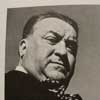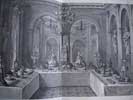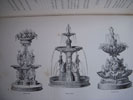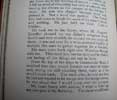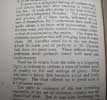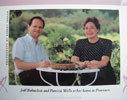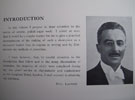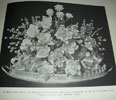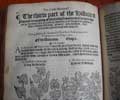Ma Gastronomie
FIRST ENGLISH EDITION. Translated and Adapted by FRANK KULLA and PATRICIA SHANNON KULLA Introduction by JOSEPH WECHSBERG Special Drawings by ANDRE DUNOYER DE SEGONZAC Lyceum Books WILTON, CONNECTICUT
Samll Folio. 280x220mm. 1fep. Title Page. [1] 1p Table of Contents. [1] 5-9 Introduction. [1] Half Title. On verso, a copty of a painting of Point. 13-191. [1] 1fep. Hardcover binding in mustard coloured cloth with brown lettering on the spine. Bright yellow mylar DJ. With many full page photographs, illustartions and drawings. Also with two handwritten undated menus in the hand of Madame Point. One menu is from the time of Fernand and the other is from the time of Madame Point, and signed by her sometime after Fernand's death. As new, inside and out. A scarce item.
- The self-taught American chef, Charlie Trotter, of the famed 'Charlie Trotter Restaurant' in Chicago, was recently quoted --- "The figure who most impressed me during my culinary development was Fernand Point. I was impressed most by Point's sense of generosity...and to this day it is something which resonates within me". Because of this declaration which was repeated publicly many times, first English editions of Point's 'Ma Gastronomie' have become extremely scarce, and waiting lists are the norm for later editions. La Pyramide in Vienne, (approx. 18 miles south of Lyon) the famous restaurant run by Fernand Point and his wife was originally purchased by Fernand’s father Auguste, in Sept. 1923. Previously the restaurant was known as Restaurant Guleu in Vienne. It had been successfully founded and run for 20 years by Leon Guleu. Fernand married Marie-Louise in 1930. She supervised the dining room at La Pyramide, kept the books, paid the bills, and oversaw many daily details. The menus were always hand written daily by Mme. Point, according to what produce was the best and available. Fernand would place his orders by phone with suppliers in Les Halles – Paris. The orders would be shipped the same day by train from Paris to Vienne. Fernand Point started his career by being apprenticed at Foyot’s and the Hotel Bristol in Paris. He also apprenticed at the Royal Hotel – Evian alongside Georges Bocuse, father of Paul Bocuse. Ironically, Paul Bocuse later trained for five years at La Pyramide under Fernand. Point kept and wrote all his kitchen notes and thoughts on cream-coloured notebooks. The notebooks became known as “Ma Cuisine” One of his favourite sayings was “I’m not hard to please. I’m content with the very best.” After Point's death, La Pyramide’s kitchens were run very ably by his assistant & brilliant cuisinier, Paul Mercier. Although Elizabeth David famously stated "this is an awful book" it is nevertheless an important part of any serious cookery book collection. What ever E. David's opinions may be, it is a much sought after book, not least, by professional chefs. This item is made all the more desirable with the inclusion of two 'La Pyramide' menus, especially the one with the signed dedication by Mme Point.






click on image to enlarge

Modern category
ref number:
11071 